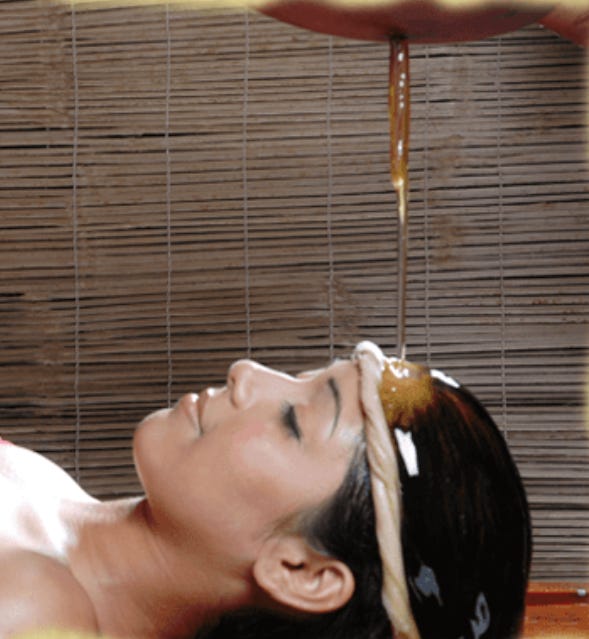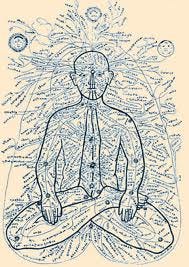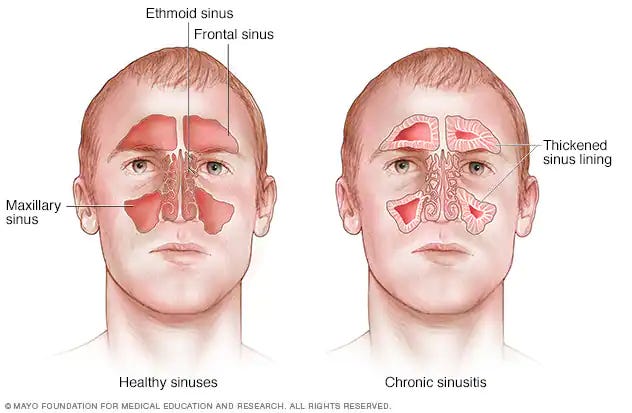While ayurveda provides excellent recommendations for preventive health and health maintenance, its interventions for diseases are astoundingly useful. These prescriptions are often suppressed and downplayed by the mainstream because they do not understand the basic principles of Ayurveda.
Foundational principles of this ancient medical system are based on observations in nature. Things that don't belong somewhere create obstacles. See a log fallen in a river and how the water turbulently flows around it. See an animal that has died and lies rotting. While it is an act of nature, it creates odors that warn of the dangers of its decaying components. See a clump of dirt in a clearing and how the animals have to move around it. That clump creates obstacles.
In the human body, such obstacles also create disturbances and blockages. Cleaning impending blockages daily as part of the daily routine is ideal. Weekly, taking some foods that clear out the gut or rituals of cleaning the eyes keep important channels clean. Monthly routines include vrata, or fasting as well as special foods designed to remove the seeds of possible disease. Seasonal routines too, such as pre-bath massage with mustard oil or eating specific seasonal foods prevent imbalances due to weather and climate and the body's reactions to the environment.
These imbalances occur because people who are unaware act on their urges and cannot separate destructive coping mechanisms from constructive gut instincts. They allow dirt to build up instead of intuitively engaging in practices that clean out any accumulations. Such routines are formed early in life both by guidance of supportive wise family members and teachers but also by by greedy social values seen in advertising and profit-driven consumer schemes. Friends and family that support the destructive behaviors help the buildup of dirty channels.
This focus on the channels of the body, known as srotas, and keeping them clean of undigestible stuffs, known as aama, is one profound difference between ayurveda and modern medicine, which focuses on molecules and not on whole system processes. Molecular pathways are interesting, but often scientists discover that the molecules are by-products and not causative agents of disease. By looking at natural flows of the body, ayurveda eliminates obstacles.
If the sinuses are blocked, modern medicine identifies chemicals seen during the blockage, usually inflammation markers, and makes molecules to obliterate those markers. It does not recognize the flow between the processes that created the markers. Those drugs that destroy the molecules are then measured for success in treating the disease, without acknowledgment of the process that was disturbed.
Ayurveda looks at the flow of air, of mucous, and of moisture in the sinus. It cleans out excess mucous and moisture using astringent or pungent or bitter herbs, depending on the season and the underlying heat and strength of the patient. Ayurveda acknowledges the process of inflammation and quells the ecosystem in the sinus, so that it can recalibrate itself to produce enough moisture and lubricating mucous so that air can flow again smoothly.
In practice, this involves the use of jalneti, water poured in the sinuses that is mixed with salt and turmeric powder, a powerful anti-inflammatory. Ayurveda then recommends waiting a few hours then applying a nasal oil depending on the patient, such as anu thailam or ksheerabala 101. The oil is prescribed specifically to the state of the patient's sinus and well as the lifestyle of the patient, the season, climate, age of the patient, and mental strength. Sometimes, herbal smoke is inhaled. Particular foods are avoided, such as milk after 5pm, fruits in the evening, and food combinations that tend to produce phlegm. Within a week, most patients who are prescribed individually will report relief of sinusitis pressure, clogged channels, and attendant symptoms.
This multi-practice approach is tedious for those who routinely neglect self-care. They would rather swallow a pill. Ayurveda reminds us to use the flowing changes at different times of day to release unneeded excess and fill up little by little on the things we lack. Because this approach does not obliterate natural healthy processes of the body, its work produces deep change, profound resistance to further disease, and cellular awareness of health.
week 99. TheSouthAsianTimes
Download the .pdf version of this column by clicking on the image.
Dr. Bhaswati Bhattacharya is a Fulbright Specialist 2018‐2023 in Public Health, a family physician in the Department of Medicine at Weill Cornell Medical College in New York, NY, and holds doctorates in pharmacology and Ayurveda. She teaches ayurvedic nutrition on global platforms and cleans her channels regularly with sesame oil, mustard oil, and ghee.
Her bestselling book Everyday Ayurveda is published by Penguin Random House.
To order an autographed copy, write to bhaswati@post.harvard.edu.
visit www.drbhaswati.com







Excellent reminder highlighting the impact dinacharya has on svastha vritta.